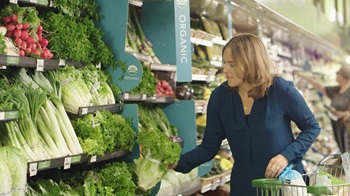Consumer demand for and industry investments in fresh foods are in full swing; however, the industry needs to focus on growing fresh’s momentum, said VP of fresh foods at the Food Industry Association, Rick Stein.
In an FMI blog post, Stein shared takeaways from the company’s recent FreshForward Conference in Denver, an annual senior-level gathering for retailers, suppliers, and stakeholders.
Consumer Demand
FMI’s Leslie G. Sarasin, president and CEO, commented on consumer demand, noting that 41 percent of food retail sales in 2022 came from fresh departments and 74 percent of retailers expect to devote more space to fresh grab-and-go selections and 40 percent to fresh produce.
“We know that fresh is enjoying a good ride, being one of the most popular and profitable sections of the grocery store,” she said, but warned that evolving consumer needs must be top of mind, including animal welfare and environmental implications.
Ecommerce Opportunities
Ecommerce is helping increase consumption of fresh foods, according to Jonna Parker, Circana’s Principal II, fresh foods team lead. She added that the industry has an opportunity to further accelerate fresh ecommerce by enhancing educational and digital experiences.
Gen Z Engagement
Gen Z shoppers are known for their skeptical natures, short attention spans, and preferences for fresh and less-processed foods, said Melissa Abbott, VP of syndicated studies at Hartman Group. The fresh food industry needs to work with them to find opportunities.
Kroger’s Ryan Wenstrup-Moore, social media manager, added the retailer leverages social platforms to engage with members of Gen Z. Strategies include working with credible influencers, relaying transparency, and highlighting the quality of fresh foods and ingredients. Full Story
Related: Study: Gen Z Has Complicated Relationship With Food; Unemployment Rises to 3.8 Percent

